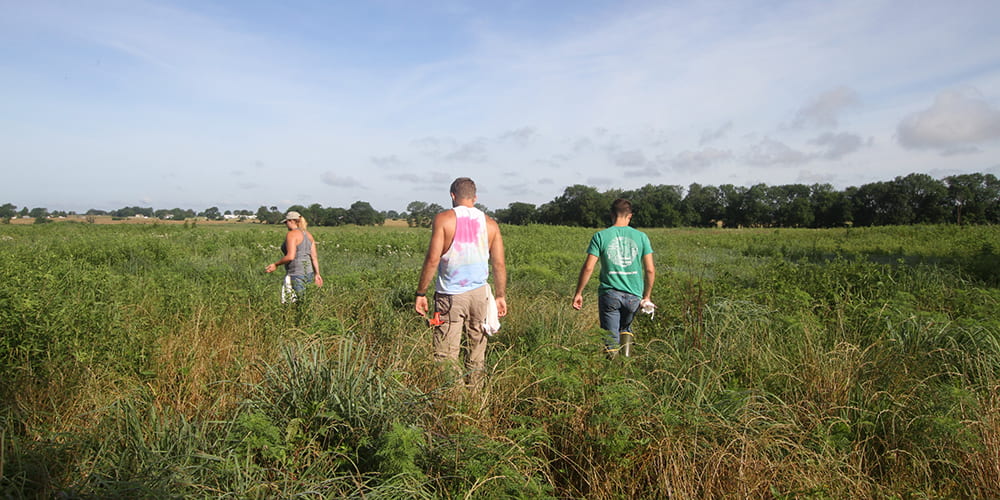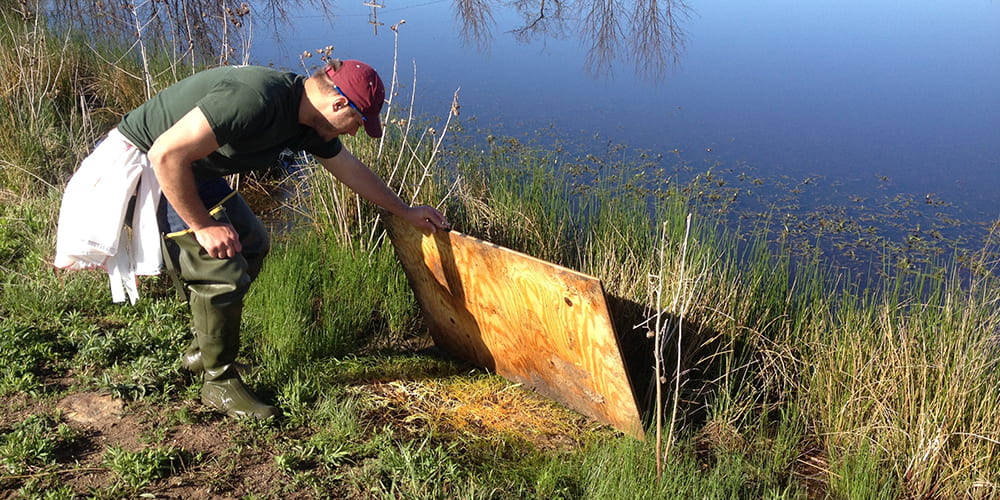Creatures of Arkansas’ Tallgrass Prairies

Arkansas was once a patchwork of forests, prairies and grasslands. While forests are still abundant, the open, natural landscape of the prairies and grassland is mostly gone, developed as farmland or urban areas. Less than 1 percent remains intact.
The tallgrass prairies of Northwest Arkansas were home to a variety of reptile and amphibian species, many of which have declined with the loss of habitat and are now listed as “species of greatest conservation need” by the Arkansas Game and Fish Commission. Animals such as the ornate box turtle, slender legless lizard, Great Plains narrowmouth frog, crawfish frog, and several types of snakes are included on the list. These are species that most people have never even heard of, let alone seen, and they are often very hard to find, even where they occur.


To find reptiles and amphibians, researchers walked the prairies, left, and placed cover boards to see what crawled underneath. Photos provided.
Graduate biology students Chelsea Kross and Ethan Royal, along with J.D. Willson, associate professor of biology, have spent the last two summers looking for reptiles and amphibians in the remaining tallgrass prairies of Northwest Arkansas. They want to know where the creatures live and what habitats they require.
“We’ve spent over 400 hours out looking for species in big prairies and grass fields,” said Kross.
They identified 34 historic prairie sites in Benton, Washington, Crawford, Madison and Carroll counties that varied from being relatively pristine to highly degraded by agriculture and urban sprawl. They visited each a total of 6 times during the summers of 2018 and 2019. To find secretive animals they deployed ‘coverboards’ – pieces of plywood that offer shade and protection – and cataloged what crawled underneath, performed visual surveys and listened for frogs.



They found 1,542 individual animals representing 55 species, including a slender glass lizard, top of page, a prairie skink, above left, an ornate box turtle, center, and a crawfish frog. Photos provided.
All told, they found 55 species and 1,542 individual reptiles and amphibians, including finding new populations of some of the rarest wildlife species in the state. They’ll spend the next few months analyzing the data they’ve collected, using modeling techniques to estimate what lives in the area’s remaining tallgrass prairies and to determine what habitat characteristics are most important to these species. The answer will help state officials determine how to best manage the land. A $42,000 State Wildlife Grant from the Arkansas Game and Fish Commission, plus matching funds, made the work possible.



